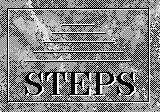Data are available from a survey questionnaire aimed at determining the
nature and scale of the incidence of bullying in schools. Students are
invited to examine and interpret the responses from children.
Attention is focused on how common bullying is, who does it to whom and
what other factors are involved. Techniques include the presentation of
response frequencies using bar charts and the cross-tabulation of data
in different categories, into contingency tables. Ideas of
significance are illustrated in animated fashion. The chi-squared test
is used to investigate whether there is association between responses
to different questions.
Data are obtained on pre-school children and follow up tests three years
later. Scores from 34 children at nursery school were obtained in a
variety of tests of vocabulary, motor skills, knowledge of prepositions
and use of rhyming. At age 7 these same 34 children were given a
reading test and their reading ages compared with chronological ages to
classify them into 'poor' readers and 'normal' readers. A comparison
is made of the distribution of 'poor' readers within the overall
distribution and directly with 'normal' readers using stem and leaf
diagrams, histograms, box plots, means, hinges (quartiles),
interquartile ranges and standard deviations. In this way, we try to
identify which, if any, of the tests might be used as predictors of poor
reading ability. This in turn is a possible indication of potential
dyslexia.
The background is the same as for 'Exploring Dyslexia'. Only the tests identified as possible predictors are used. A suitable measure of reading deficit at age 7 is Reading Age - Chronological Age in months. We have called this Reading Age Deficiency (RAD). Correlation and regression techniques are used to see how well any of the tests at age 4 predict RAD at age 7.
As in the module 'Exploring Dyslexia', poor reading
ability is taken as an indication of potential dyslexia.
What are the important characteristics of speech in head-injured
patients that lead to misunderstanding in the hearer? Subjective
ratings of clarity and content are made by professional and untrained
judges. Twenty head injured and twenty matched control subjects took
part in the study. Can we use the untrained judges instead of the
professionals? Do the subjective measures differentiate between the
patients and the controls? Can we use the subjective measures instead
of objective measures? If we can, then we can save a lot of time and
money. This problem is used to introduce looking at measures of
difference and the paired t-test of significance. A possible extension
is to use an appropriate non-parametric test if the underlying
assumptions behind t seem to be invalid.
Our researcher is interested in discovering whether the elderly and the
young differ in the accuracy with which they can recall spatial
position on a small scale. Participants inspected an array of 18
different objects on a 10 x 10 board. The objects were removed and the
participants had to replace them in the same places. There were 22
elderly and 16 young participants. Data measured were: time spent
inspecting; percentage of objects correctly replaced; own estimate of
percentage control; 'city block' error between target positions and
actual positions. After discussion about what is an appropriate
measure, the percentage of objects correct and the city block error are
used to test between the two groups. Two sample t-test is introduced.
(Possible to use non-parametric test as well).

